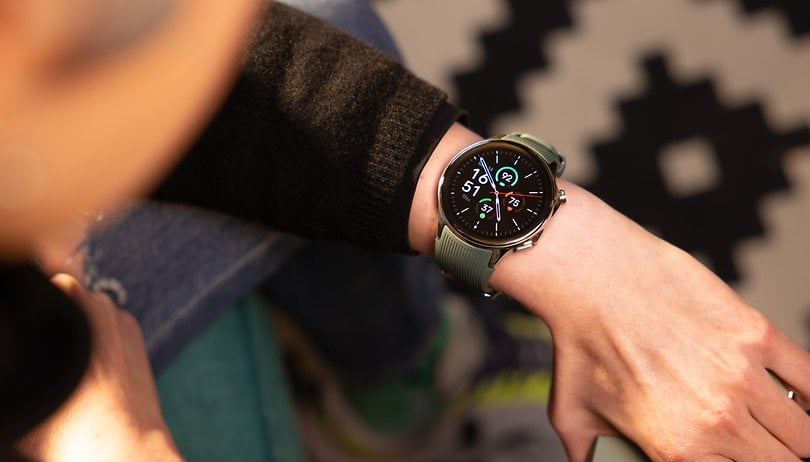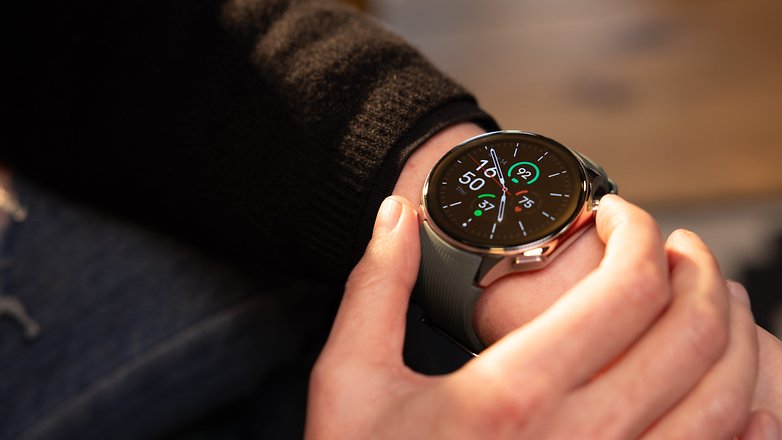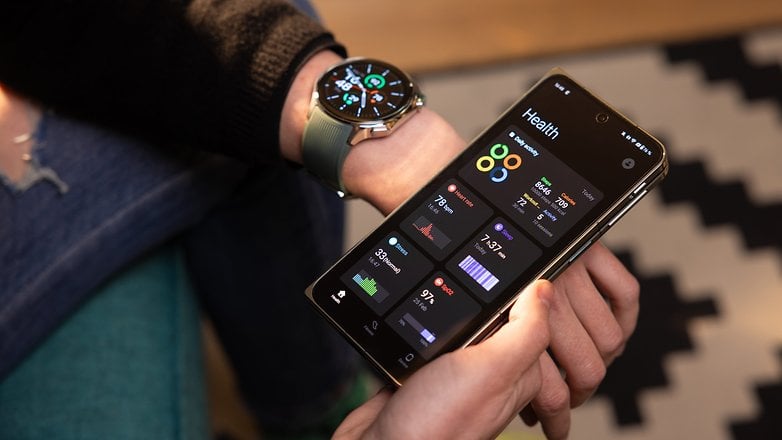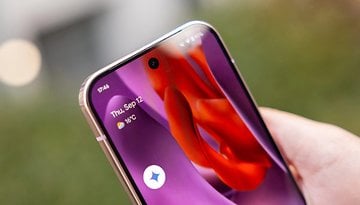OnePlus Watch 2 Review: Does Its $300 Price Tag Justify the Drawbacks?


In its second attempt to create a smartwatch, OnePlus has partnered with Google to deliver a more efficient device. While the OnePlus Watch 2 offers solid battery life and premium built quality, it lacks consistency and creativity on the software side. In this review, I will discuss the highlights and lowlights of OnePlus's new smartwatch.
Good
- Premium build quality
- Reliable three-day battery life
- Dual-band GPS frequency for improved accuracy
- Comprehensive running statistics
- Competitively priced
Bad
- Available in only one size
- Lacks rotating crown functionality
- Sleep tracking metrics are unreliable at this development stage
- No built-in menstrual cycle tracking feature

Design
Upon first glance, the OnePlus Watch 2 presents itself as a premium smartwatch, boasting a stainless steel body and a sapphire crystal screen. The combination of a rubber band with a stainless-steel buckle not only feels gentle on the skin but also sports an appealing aesthetic. However, it's worth noting that this device is not particularly lightweight, weighing in at 80 grams with a diameter of 46 mm—something your wrist will definitely notice .
In terms of durability and certifications, the Watch 2 complies with 5ATM and IP68 water resistance standards and adheres to MIL-STD-810H military standards. Such adherence indicates that the smartwatch is engineered for rugged use, capable of enduring severe conditions and environments. This is a good choice for people who like to go outside, play sports, or need a timepiece that can last a long time.
Pros:
- Stainless steel body and sapphire crystal screen.
- The rubber band paired with a stainless steel buckle is gentle on the skin.
- Meets 5ATM and IP68 water resistance standards.
- Compliant with MIL-STD-810H military standards.
Cons:
- The watch is available in only one size: 47 mm.
- The crown functions solely as a button, lacking rotation capability.

Let's now turn our attention to the case body of the OnePlus Watch 2. As previously noted, it's elegantly constructed from stainless steel, yet it's only available in a 47 mm size. This design choice likely makes it more suitable for a select group of users, which is not very inclusive. This sentiment is echoed by many other journalists who have tested the device.
But why would OnePlus make such a decision? A plausible reason is the size of the battery. The case accommodates a 500 mAh battery, one of the largest battery capacities found in smartwatches today. It appears OnePlus prioritized battery life in this model, which may have led the engineering team to overlook other aspects.
Furthermore, although the Watch 2 includes a physical button that resembles a rotating crown, its functionality is quite restricted as it does not support scrolling. Touching the screen is necessary for navigation through the system options, which kind of ruins the user experience, especially for those who might appreciate a rotating crown when covered in gloves or with wet hands.
Therefore, it seems that in terms of design, there are significant compromises made to achieve three days of battery life. And it's worth noting, this is not an issue exclusive to the OnePlus Watch 2.
Here at nextpit, we've previously reviewed devices such as the Mobvoi TicWatch Pro 5, which offers a week of battery runtime, and the hybrid Withings ScanWatch 2 (review), boasting 27 days of battery life. Additionally, the Garmin Fenix 7 Pro (review) can deliver up to 37 days of battery life.
Finally, I would like to share my impressions of the strap. Initially, I found the one OnePlus included in the box to be somewhat bulky; however, I must admit that it grew on me over time. I didn't experience any allergic reactions, and it was really easy to remove from the lug hole, as well as simple to clean. This is where you can truly appreciate OnePlus's attention to detail regarding the number of adjustment holes—they provided 17 in total.
Display
The OnePlus Watch 2 stands out with its stunning 1.43-inch OLED rounded display—which I believe is crucial for a smartwatch. The display is super clear with 466 pixels across and packs 461 pixels in every inch, making it really detailed. It's a key part of the Watch 2 that you can't just upgrade later, so it's the standout feature .
Pros:
- Large, high-contrast display.
- Reliable Always-on Display (AoD) feature.
- Highly responsive to touch.
Cons:
- The display edges could be narrower.
- The lowest brightness setting is still excessively bright.

It's true that the display's high contrast and modern technology make everything look clear and sharp. You will certainly see all the details easily on the small screen, especially during outdoor usage, since its peak brightness goes up to 1,000 nits.
On the other hand, at the lowest level of brightness—as in many smartwatches—it's still too bright. For moments like a cozy night, the movie theater, or bedtime, you will need to use the Do Not Disturb (DND) mode.
While the 47 mm size might be considered a downside by many, given the smartwatch faces and user interface elements, a larger screen can indeed be a blessing. Personally, I've been using the smallest text size and love how much information I can see on this screen.
Furthermore, regardless of the angle of my wrist, I can still recognize the elements on the watch face in Always-On Display (AoD) Mode, which I consider pretty neat for a smartwatch.

Software and Compatibility
Powered by the latest Wear OS by Google, the OnePlus Watch 2 offers seamless integration with Android and OnePlus devices. Consequently, most Google apps are accessible. You can also use the Google Play Store on the watch to search for apps .
Pros:
- Seamless integration with Google's expansive ecosystem.
- Compatibility with a wide range of Android devices.
- Strong developer support, with many apps available on the Google Play Store.
- The watch faces are very generic.
Cons:
- Lacks OnePlus' original software integrations.
- The companion app lacks maturity.

That said, OnePlus provides a companion app called OHealth, which is necessary to download to use with the smartwatch. This app enables you to control the device and obtain a comprehensive overview of your health and fitness data. However, the manufacturer partnered with an unexpected company to develop the app: Bravo Unicorn PTE. LTD., known for developing casual games.
On Google Play Store, the app has a 2.6-star rating, which may vary depending on your region, and has been downloaded more than a million times. The description reveals that this is also the companion app for Oppo wearable devices. Most of the complaints are related to the sleep tracking service.
OHealth (formerly HeyTap Health) is the companion application for OPPO smart wearable devices and OnePlus Watch 2. After pairing your device, you can set OHealth to access your phone's notifications, SMS and calls, and process or answer them on the device. (Google Play Store)
The OHealth app falls short in terms of user experience and is not particularly intuitive. Essentially, it seems to lack maturity. While it allows for integration with your OnePlus account, my experience suggests this feature doesn't significantly enhance the overall experience. Notably, even my profile picture doesn't appear at the top of the home screen.
On the other hand, the use of Wear OS by OnePlus brings its own set of advantages, such as seamless integration with Google's expansive ecosystem. This includes easy access to services like Google Assistant, Google Pay, and Google Fit, enhancing the smartwatch's utility.
Additionally, Wear OS's compatibility with a wide range of Android devices and its strong developer support—evidenced by a plethora of apps available on the Google Play Store, including Strava, Calm, and Audible—adds significant value.

But running Wear OS is not the only important thing. OnePlus also has to offer a rich user experience that shows their unique style and meets their customers' expectations. It's hard for OnePlus to stand out from other Wear OS-powered devices in the market. They need to improve their software to do this.
One way I believed OnePlus could stand out was through unique watch faces, but unfortunately, that didn't happen. The watch faces are too similar, obvious, and lack originality—and there's a total of 100 of them. Thankfully, Wear OS allows for the customization of complications, enabling you to modify the default options. I do hope OnePlus will introduce more creative and original watch faces in the future.
Finally, the companion app controls settings like smartwatch faces and fitness reports, but you'll spend most of your time directly using the smartwatch. The watch's user interface and navigation are good, although they're similar to other Wear OS devices. The video below shows how to navigate the Watch 2 user interface:
Wellness and Fitness Features
The OnePlus Watch 2 supports over 100 sports modes, offering a great level of tracking stats. Additionally, the device is equipped with dual-band GPS (L5 and L1 frequencies), an attractive feature for those who enjoy running or cycling. But does the software follow the hardware, and does the hardware complement the software effectively ?
Pros:
- Dual-band GPS frequencies.
- Comprehensive collection of running statistics.
Cons:
- Unreliable sleep tracking system.
- No menstrual cycle tracking option.
First, let's acknowledge that these are wellness devices and, as such, do not carry the responsibilities for accuracy that medical devices do. So, I'm not here to point out the precision of the GPS and other sensors. However, I will compare it to some of the devices I'm currently using for heart monitoring, sleep tracking, and workouts, such as outdoor and indoor running.
The OnePlus Watch 2 is equipped with a handful of sensors, such as the optical heart rate sensor and the optical pulse oximeter. While the former is not used for ECG, it measures your heart zones during exercises, changes in heartbeats during sleep, and heart rate variability (HRV) over time to calculate the stress score. The latter is used for measuring SpO2 levels.
I've been using the OnePlus Watch 2 alongside the Apple Watch Series 9 (review), and when it comes to monitoring heart rate and SpO2 levels, both devices deliver very similar statistics.
Before diving into the specific health and fitness features of the new OnePlus smartwatch, I want to highlight a significant oversight by the software engineers of this device: The Watch 2 lacks a native menstrual cycle tracking feature.
To clarify, the absence of a built-in temperature sensor does not prevent the device from offering menstrual cycle tracking; it simply means it cannot provide ovulation predictions like Apple and Samsung devices do. However, it could still incorporate a calendar and an algorithm to help individuals who menstruate track their cycle.
Unfortunately, I have not found any app in the Google Play Store that seemed reliable enough to use with the Watch 2—a call to action for developers! After my rant, let's discuss the running and sleep tracking.
Running Stats
The dual-band GPS on the OnePlus Watch 2 performed quite closely to the Amazfit Band I'm as well testing, which also features dual-band GPS. Since I'm recovering from an illness, I opted for a short test involving outdoor running on a track, and both devices were able to differentiate among the trackers I used. Quite impressive.
When it comes to real-time heart rate monitoring, both devices once again showed similar results in terms of metrics and heart rate zones. In this comparison, I also used the new Garmin HRM-FIT chest strap as a more precise benchmark device, and once again, the numbers were remarkably similar.

Even though the strap recorded an average of 128 bpm, the Amazfit Band recorded 154, and the OnePlus Watch 2 registered 161. I wore the Amazfit device on my left arm and the OnePlus watch on my right arm. Therefore, I consider both results to be very plausible.
Overall, the OnePlus Watch 2 offers a wide range of features for both casual and serious runners. It tracks distance, time, pace (including average and top speeds), calories burned, and steps. It also measures cadence to help improve running efficiency.
The watch continuously monitors heart rate, showing average and peak levels, and analyzes heart rate zones to measure workout intensity. It provides extra details like stride length, running power, and changes in elevation, useful for analyzing performance across different terrains.
I really liked to see how it estimates recovery time to help plan training, and includes metrics such as Ground Contact Time balance and Average Vertical Oscillation for technique improvement. Additionally, it offers a VO2 max estimate, making it a well-rounded tool for tracking fitness and running performance.
Sleep stats
First things first: the OnePlus Watch 2's sleep tracking feature is comprehensive, giving users a clear view of how long they sleep and how much time they spend in each sleep stage, including deep, light, and REM sleep. Personally, I'm a fan of the sleep tracking feature in a wearable device. Here, it simplifies sleep analysis with an easy-to-read chart and calculates a sleep score to help you see if you're getting quality rest.

Besides tracking how long and how well you sleep, the OnePlus Watch 2 also monitors important signs like your breathing and heart rate during the night. It offers personalized tips, like the best time to go to bed, to help improve your sleep. These features emphasize the watch's focus on health and well-being. However...
... In the software section, I discuss the low rating of the companion app, OHealth, noting that one of the main complaints is about the sleep tracking data. Yes, unfortunately, the sleep metrics are not reliable at this stage of development. Here, I will compare the sleep stats results with the Apple Watch Series 9.

Not only is the amount of time spent sleeping or in bed different, but the amount of Deep Sleep reported is also inaccurate. How do I know this? I have been monitoring my sleep for years now; I have a strict sleep routine, and my goal is to optimize my Deep Sleep numbers. So, I can already tell when I've had more than one hour of Deep Sleep, by feeling my energy throughout the day. The numbers the OnePlus Watch 2 offers me every day are impressive, but not consistent with reality.
I suggest you watch a comprehensive review by the channel 'The Quantified Scientist' on Apple's sleep tracking algorithm. This will help you understand why I'm using it as a benchmark in my tests and why I'm considering it in the first place.
That said, this is my opinion after testing the OnePlus Watch 2 sleep tracking: It's just not reliable. It appears to agree with the community's opinion in the Google Play Store, and I suggest you also check other trusted channels about this specific feature.
Moreover, I wouldn't recommend using a device that is 47 mm and weighs 80 grams to track your sleep. It's just not worth it. It's uncomfortable.
Battery Life
One issue with using Wear OS is it can use up the battery fast. Plus, the performance of these watches can change depending on their parts, and companies can't fully control what they offer. And this is precisely what OnePlus aims to solve with the Watch 2 .
Pros:
- Features dual-engine technology.
- Lasts up to three days on a single charge.
- Supports quick charging.
Cons:
- The charger adapter is prone to being lost.

The OnePlus Watch 2 features a dual-engine architecture that promises longevity in battery life and smooth, responsive performance. Equipped with the Snapdragon W5 + BES2700 chip, the extended battery life is the most noticeable improvement so far.
I've been using the Watch 2 for some time and consistently get three days of battery life with normal use, including workouts. This is impressive compared to my Apple Watch Series 9, which needed charging three times in the same period, making it a significant achievement for OnePlus.
The smartwatch also features rapid charging technology, minimizing your time attached to a charger. It takes about 60 minutes to fully charge from 0 to 100%, but if you're rushing, a 30-minute charge can power it for an entire day.
One thing to watch out for with the charging adapter and cable that come with it: unlike Apple and Amazfit, OnePlus has chosen a design where the adapter can be separated from the cable. This means you might easily lose it if you carry your chargers in your backpack or purse. While this might not be a big deal for smartphones, in the world of smartwatches, you can't just use any other charger because there are no universal standards for smartwatch chargers yet.

Key Features
| OnePlus Watch 2 | |
|---|---|
| Display |
|
| Sensors |
|
| Memory |
|
| Battery |
|
| Connectivity |
|
| IP Certification |
|
| Materials |
|
| Dimensions and weight |
|
| Colors |
|
| Compatibility |
|
Final verdict
OnePlus has partnered with Google to deliver a smartwatch that is compatible with a wide range of Android devices, and that comes to the market with support from the Google Play Store ecosystem. Additionally, the company leverages Google's hybrid-engine architecture, which promises to extend battery life and a responsive performance.
However, the outsourcing of responsibilities does not end there. OnePlus has also collaborated with another development agency to create their companion app, OHealth. It almost feels as though they were given the blueprint for the OnePlus Watch 2, constructed it, slapped their name on it, and priced it—at a very attractive price point.
Indeed, the Watch 2 boasts premium build quality, offers a three-day battery life on most days, includes dual-band GPS frequency, and provides comprehensive running statistics. Conversely, its one-size-fits-all approach may not appeal to everyone, and it makes questionable design choices, such as the absence of rotating crown functionality and unreliable sleep tracking metrics. It also lacks a built-in menstrual cycle tracking feature.
Considering what I've tested, it appears that the OnePlus Watch 2 could be a useful tool for some people. If you're in the market for a robust smartwatch that can serve as an extension of your phone for messages, calls, and quick controls, or if you need a device that offers a thorough overview of your running training, the OnePlus Watch 2 might suit you. Additionally, it provides a reliable battery life, reducing the need for frequent charging.
However, if you're seeking a smartwatch that offers a comprehensive health and fitness experience, this might not be the right choice. The unreliable sleep tracking data is a significant drawback, especially for those looking to improve their quality of life. Furthermore, if you need menstrual cycle tracking, this device will not meet your needs.
The OnePlus Watch 2 starts at $300, but you can enjoy a $50 discount when trading in any watch—and it doesn't even have to be a smartwatch. This means you can purchase the 32 GB variant for $250, which is an attractive deal. However, before making your decision, I recommend reading our smartwatch buying guide to determine if the OnePlus Watch 2 is truly the best option for you.
Finally, does the price tag of the OnePlus Watch 2 justify its drawbacks? In my opinion, no! Take the Amazfit Balance, for instance. It costs $230 and offers longer battery life and much more reliable fitness and health metrics. Although it does not support Android Wear OS, it is also available for iOS devices.
Now I'm curious—would you consider giving the OnePlus Watch 2 a chance? If so, why?






















The article is very detailed and easy to understand. Thanks for sharing this valuable information!